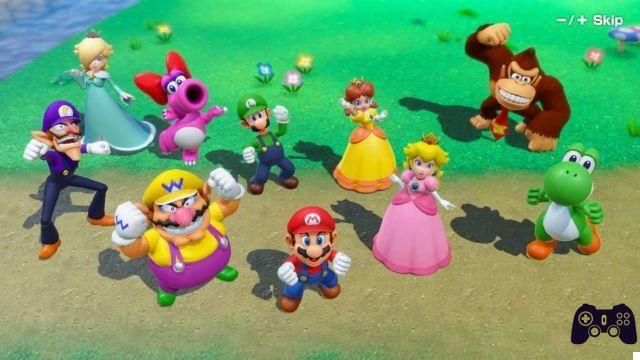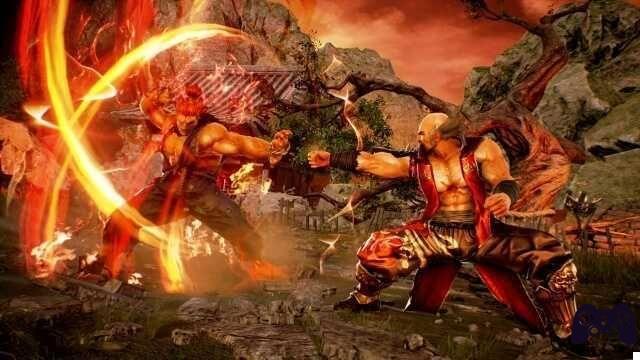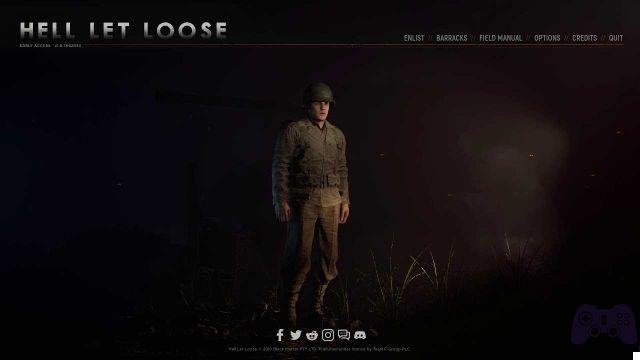Welcome back to the sixth installment of our in-depth guide to Super Smash Bros. Ultimate's stellar cast of playable characters
In this ours guide, we will devote ourselves to the many characters playable of Super Smash Bros. Ultimate, starting with Mario up to the latest additions of the second Fighters Pass. In each episode we will describe about five or six fighters, however, dividing them according to the chapter of Smash in which they made their debut. As you can see from the image above, today we're going to start talking about the characters first seen in Super Smash Bros. Brawl for Wii. We will therefore talk about Goal knight, Pit, Samus Zero Suit, Wario e Snake. In the appendix, we will focus on instruments e Smash Finals.
Quick Preamble
Before moving on to the characters, let's clarify the fulcrum of the guide: in Super Smash Bros. Ultimate the task of each player is to throw opponents off the screen, fighting in arenas that mix the genre of fighting with elements of platformer (X and Y allow you to jump). The A and B keys, used in combination with the various directions, give life to the most disparate moves, as well as the back keys to manage shields, dodges and holds. The game also implements tools that irremediably alter the fate of each encounter, but in this guide we will basically focus only and only on the characters themselves. Increasing the opponent's damage will make him lighter and, therefore, vulnerable.
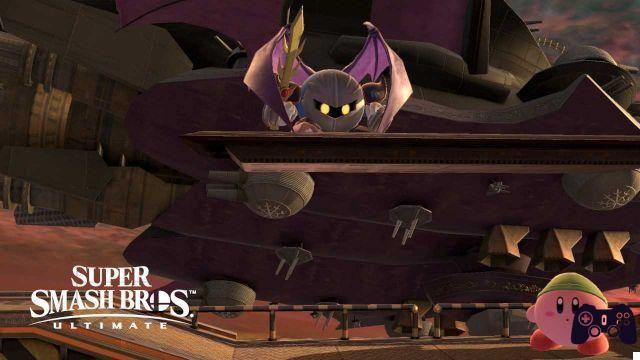
Meta Knight - Super Smash Bros. Ultimate Character Guide
Goal knight is a recurring boss of the Kirby series, and the second representative from this franchise to be introduced in Brawl. Contrary to King Dedede (and even in the latter's case this is debatable), Meta Knight rarely plays the role of the antagonist. Recently, the character played with Dedede the role of the final boss in Kirby Fighters 2. The look he has under the mask is only visible when defeating him, and only for a brief moment that we recreated in our illustration of Kirby himself. .
- Franchise of origin: Kirby
- Origins: Meta Knight can be defined as a 'neutral entity in most Kirby games. Sometimes he accidentally helps the bad guys, other times he acts as an ally for the good ones by acting in the shadows. In general, when he confronts Kirby he does it more out of a sense of honor than anything else. In these cases, he offers him the sword to compete with him in a clash between equal rivals. The only time he acted with openly sinister intentions was in the adventure The Revenge of Meta Knight in Kirby Super Star, of which the La Halberd arena (above) picks up the whole story for good or bad.
- Gameplay: While in Kirby's games the (few) times Meta Knight has been playable have offered a satisfying variant of Kirby Spada's moveset, in Super Smash Bros. defining Meta Knight's gameplay is… complicated. The multiple jumps still make it reliable, but the character's sword needs to fight a close range. Good or bad, Tornado Mach (B) proposes almost the same principle as Kirby Tornado from the Kirby series: pressing B repeatedly on the character takes altitude, but otherwise it's a simple twist. Super turbine (↔ + B) is steerable once triggered, but at the end of the move Meta Knight will remain helpless until it hits the ground. The same goes for the upward lunge Hyperspace rotation (↑ + B), while the Dimensional cloak (↓ + B) is a quick directional vanish at the end of which Meta Knight will strike.
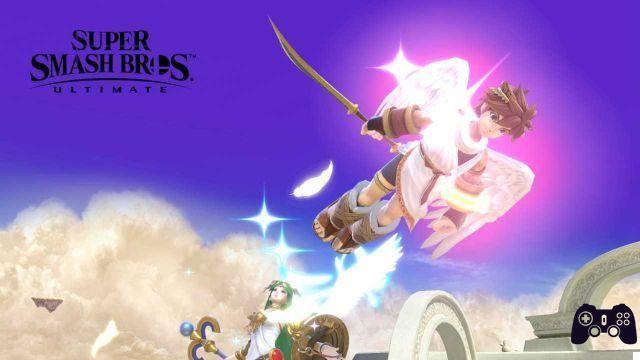
Pit - Super Smash Bros. Ultimate Character Guide
As we anticipated with the Ice Climbers, in this guide we will often see characters that Super Smash Bros. has brought back into vogue. In Brawl it happened with two fighters, the first of which is Pit. The irony of fate sees Pit protagonist of a modern redesign, more "anime style" if you like. Let's talk about "irony" because the new designs for Pit and Palutena (above) are back in an almost unrelated game, that is Kid Icarus Uprising, on 3DS. The actual return of the Kid Icarus series was overseen by Masahiro Sakurai himself, who predictably merged (in part) the canon of Kid Icarus with that of Smash.
- Franchise of origin: Kid Icarus
- Origins: In this videogame version of Greek mythology (years before Hades, God of War or Immortals Fenyx Rising), Pit comes from the "land of angels" and acts as a champion chosen by the goddess Palutena. The threat of Medusa, antagonist of the first two games, has given way to a much more colorful cast of supporting actors who have made Kid Icarus Uprising the beloved and light-hearted reinterpretation of the Olympic myths we know today. The first Kid Icarus (NES) dates back to 1987, while the follow-up Of Myths and Monsters (Game Boy) is from 1992 and, finally, Uprising brought the series back to life in 2012.
- Gameplay: After a limping debut in Brawl, from the fourth Smash forward Pit has become a lot more versatile. As a character, he is technical enough but also aggressive at the same time. L'Arch of Palutena (B) lets you shoot a directional arrow of light (sideways, up and, with a little practice, diagonally). Arm uppercut (↔ + B) is based on the same principle as Captain Falcon's Raptor Rush (second installment), but can also reflect projectiles and prevent retaliation from weaker attacks from opponents. The Gift of Flight (↑ + B) is based on the same principle of Fox Fire and Hawk Fire, but unlike those two it does not inflict damage and allows for immediate momentum (again, image). Orbit shield (↓ + B) finally reflects the bullets from both sides, but it can break.
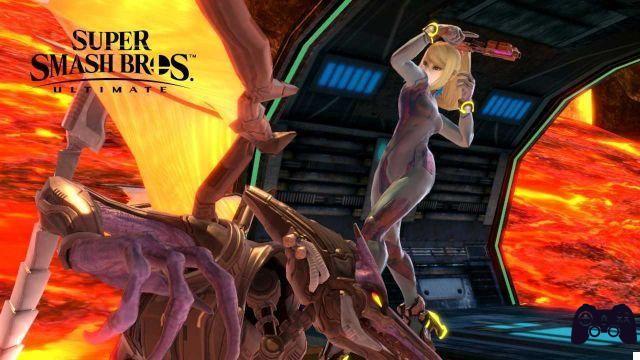
Samus Zero Suit - Super Smash Bros. Ultimate Character Guide
The Metroid heroine shows off her athletic physique in the “zero suit” to which the name alludes. This version, however, puts resolute character and agility before grace and femininity. With Samus Zero Suit do not mess around, least of all with those who know how to exploit the abilities of a Samus Aran deprived of armor!
- Franchise of origin: Metroid
- Origins: Samus' “zero suit” was born, aptly, in the Game Boy Advance remake of the first Metroid (1986). The resultant Metroid Zero Mission (2004) contained a stealth-like phase in which Samus had to get away with a skintight suit and a stun gun. In Brawl you could only play as Zero Suit Samus by unleashing a Final Smash attack (and vice versa). From the fourth Smash onwards, however, the two entities have each become their own character.
- Gameplay: Samus Tuta Zero is stealthy and agile, but unwilling to hit hard. Paralyzing ray (B) temporarily stuns the target it hits. Plasma whisk (↔ + B) delivers a forward laser whip, capable of dealing damage without a particular casting power. The Enhanced stock (↑ + B) Throws Samus Zero Suit upwards with an effect similar to the uprights of Mario, Luigi and Dr. Mario. The Arc jump (↓ + B) is comparable instead to the same move as Sheik: excellent both for dodging and for surprisingly hitting the enemy.
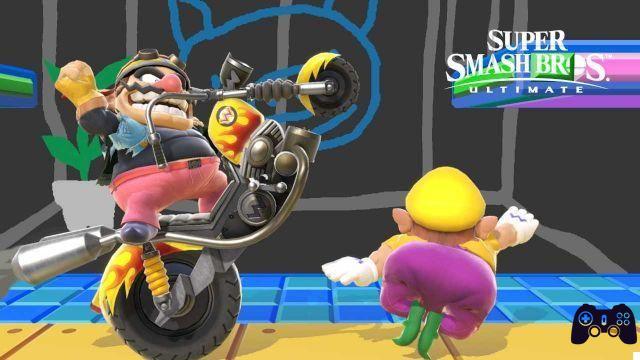
Wario - Super Smash Bros. Ultimate Character Guide
Among the characters that we will see in the guide, Wario is among the most peculiar of Super Smash Bros. Ultimate. Now more linked to WarioWare than to Wario Land, the greedy big man in yellow boasts an "incorrect" arsenal in pure Wario style, as well as two different costumes based on the version in which we want to see him (inspired by the two series just mentioned, as you can see above).
- Franchise of origin: WarioWare (Mario spinoff); actual debut in the Super Mario Land series
- Origins: Wario was born in Super Mario Land 2: 6 Golden Coins for Game Boy, which is the title that transformed the portable series from a pale imitation of the glories of the NES to a credible alternative to Super Mario World for Super NES. The greedy treasure hunter, after a memorable - and never repeated - clash with Mario as final boss, received his own platformer series from the third Super Mario Land onwards: he was thus born Wario land. Later, the idea of a series of very short (and zany) minigames conceived by the authors of Mario Paint gave life to the first WarioWare on Game Boy Advance, and the rest is history.
- Gameplay: Don't be fooled by the malted pregnancy belly, Wario is much more agile than her weight would lead you to think. Bite (B) is a hold that allows Wario to decrease damage increasing those of the opponent, carrying on the chewing with other pressures of B. La Wario Bike (↔ + B) allows Wario to recall his bike, and to turn left and right changing speed according to the type of inclination. The bike can be destroyed or abandoned with a jump, but in the first case you have to wait for Wario to flash before using it again. Screwing (↑ + B) is a multi-hit upward attack. Finally, the gust of Wario (↓ + B) allows him to accumulate gas in his belly before unleashing the attack: the charge is based on the time of inactivity (losing lives does not interrupt it), and the effects range from weak tripping up to a devastating explosion.
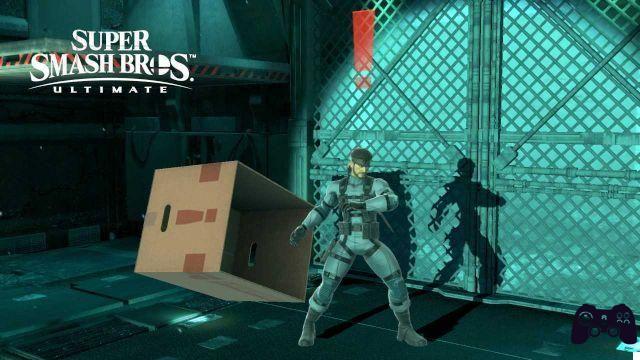
Snake - Super Smash Bros. Ultimate Character Guide
We arrived at the famous bang that closed in a striking way the aforementioned E3 2006 trailer of Super Smash Bros. Brawl: the arrival of a character not only foreign to Nintendo, but coming from a series usually associated with PlayStation intended for an audience mostly adult. People Solid Snake, the result of genetic manipulation, is the protagonist of the Metal Gear series, which with the episode Solid became one of the symbols of the first Sony home console.
- Franchise of origin: Metal Gear
- Origins: Solid Snake's origins within Metal Gear see this clone of the super soldier Big Boss / Naked Snake working as a mercenary on behalf of the FOXHOUND group. On his missions, he infiltrates the planet's best-kept secret bases, such as Outer Heaven, Zanzibar Land, and Shadow Moses Island (Snake Arena, image above). Snake has foiled a nuclear war on a global scale several times by preventing the activation of variants of the mecha known as Metal Gear. Snake's origins as a creation of Konami are inspired by Kurt Russell's character, Jena / Snake Plissken, from the 1997 film: Escape from New York. Snake's origins as a fighter in Smash stem from a request for Hideo Kojima to include Snake in Melee, now in development at the time, in order to allow Kojima's son to play with a creation of his father. Masahiro Sakurai has kept the matter aside for Brawl.
- Gameplay: Snake's stealth results in one learning curve on the verge of vertiginous. Granata (B) is based on the same concept as the Baby Link and Cardboard Link bombs (which we will see later): holding B allows Snake to hold the device, but the safety is removed on the first press. The Guided missile (↔ + B) can be fully controlled by holding B and tilting the lever, but leaves Snake vulnerable to attack until he hits the target - if he misses, he can be dropped with the shield. The drone Cypher (↑ + B) can be directed to the right and left, but to the detriment of slowness it covers a more than generous distance. With the C4 (↓ + B) Snake can place plastic explosive on the ground (or on an opponent) and detonate it later with the same input. Overall, Snake rewards the defensive play, with Smash attacks (right analog lever) powerful but difficult to score (the side one above all).
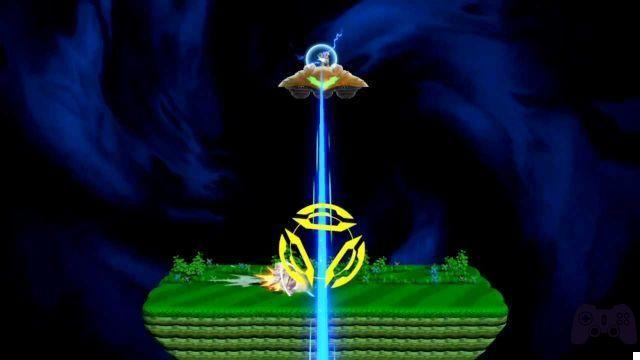
Concluding details, sixth episode: tools and Final Smash
This time we spent a lot of time with some characters, so it's time to dedicate ourselves to the general guide of Super Smash Bros. Ultimate. And since we've come to Brawl, perhaps the least competitive of the series, we'd like to briefly talk about tools and Final Smashes here. Let's start with instruments: they can be thrown or wielded, but some can also be activated by touching them (Super Star, Super Mushroom) or hitting them (Smash Sphere). They lend themselves to the most disparate uses, and some can be abandoned in advance by throwing them with a hold (Shield + A).
La Smash ball, in particular, it allows the character to launch their own Final Smash (if hit enough). It's a powerful move that draws heavily on the character's origins, from Mario's Spire of Fire (Super Mario RPG: Legend of The Seven Stars) to Pit's Lightning Chariot (Kid Icarus Uprising). Each of them replaces the standard Special Attack (B), and explaining them all would require a separate episode given the diversity in activation and - sometimes - in the required inputs. In general, we recommend that you activate Final Smashes when you have your opponent in front of you so as not to hit empty.
You can also use it without Smash Sphere or tools in general, by setting the Final Smash Gauge in the regulation. The Gauge fills up dealing and taking damage, but once full it must be used immediately. And that's all for today: how are you finding yourselves so far? (You can find the summary here.) Please let us know by leaving us a comment below, and don't forget to stay on Holygamerz to not miss any news from the videogame world and beyond.




